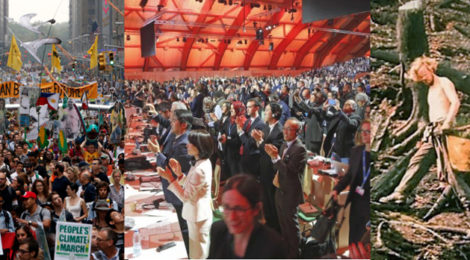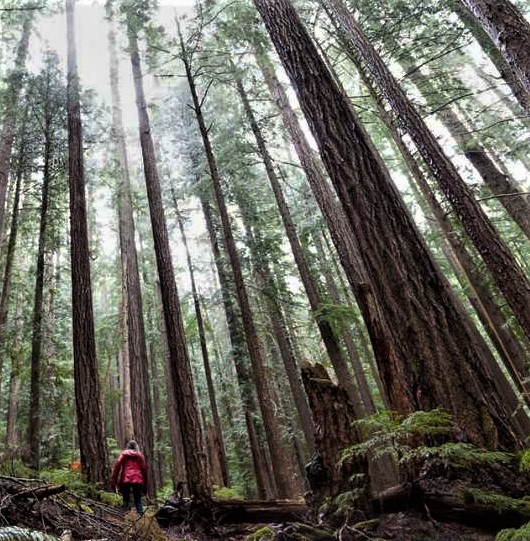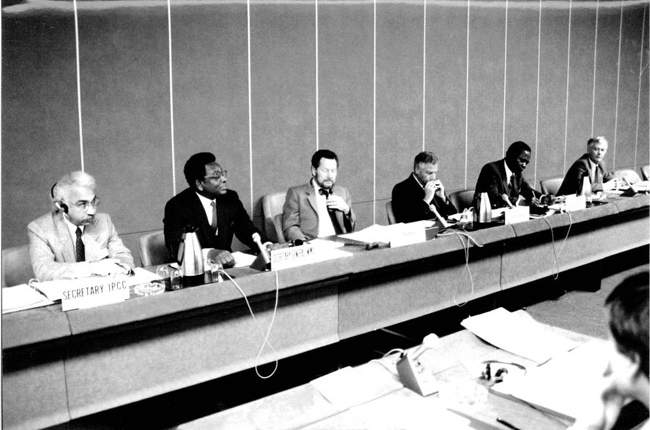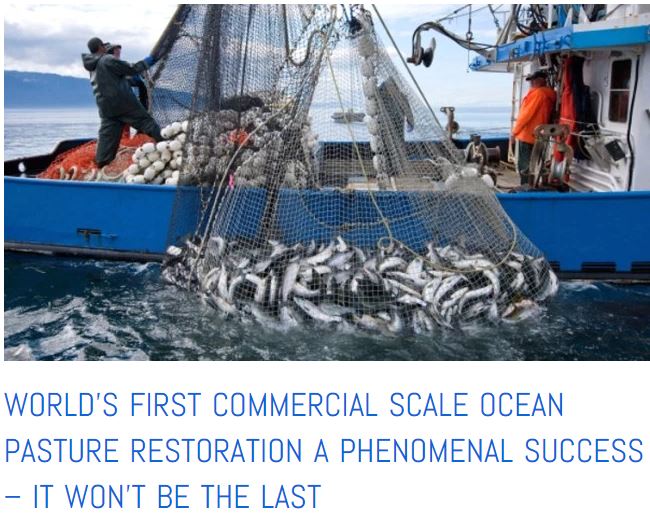
The People Posing The Greatest Danger To The Planet Are …
… those waiting for someone else to save it
Vast numbers of people are ‘fans’ of, and place their hope in, solutions to climate change
Legions are employed in the burgeoning bureaucracies set up in 195 nations to manage the crisis
Handfuls of people are actually working day in and day out to save the planet
The fact that CO2 is changing our planet in ways that make it less suitable for life as we know it is incontrovertible. It alone is not the greatest danger to the planet. The debate on this topic is seemingly endless, all the while as the arguments continue, the decline of our environment progresses to drag all into the environmental cataclysm.
Humanity seems to love above all – arguments. Climate change is the greatest ‘peaceful’ argument of all time. Countless millions are engaged in that argument, very few are engaged in the needed environmental solution at its ‘grass-roots‘.

Nearing 50 years of age these towering Douglas Fir’s, like tens of thousands whose delicate baby roots were once in my hands, live their lives for the benefit of all.
The photo at the top of this post shows some of the hordes engaged with the recent Paris Accord, that’s me on the right 45 years ago lovingly planting baby seedling trees that are today towering CO2 repurposing giants doing the heavy lifting to save our precious planet.
Many of my trees are now nearing 100 feet in height and almost 3 feet in diameter, give them another 1000 years to grow and they will be 300 feet tall and 15 feet in diameter. Click to watch a music video about old growth trees, Mr. Douglas vid.
God bless them every one, all are needed.

The founding meeting in 1988 of the international effort on global climate change at the UN COP 01. A handful of people attended. Click to go to the conference of the parties history e-book page
To come to agreement on the most important ‘milestone’ toward developing a global consensus on climate change, the Paris Accord meeting in France in December 2015 registered 36,000 delegates from 195 nations to engage in the political drafting of the accord. Those 36,000 delegates managed to complete the accord in just over a week of collaborative work. Now that’s teamwork!
Only a tiny fraction of the bureaucrats who work everyday in their 195 nations on this topic were able to travel to Paris for that week-long event. Those lucky tens of thousands were joined in Paris to make their presence known, global news reports that on just one day marchers in nations around the world fielded 600,000 people in the streets of cities around the world to show their solidarity with and hopes for the success of the Paris Accord. It has been estimated that the amount of money spent in the month surrounding the Paris Climate Accord exceeded $1 billion dollars.
The scope and depth of the crisis of global climate change is described by the hundreds of thousands of people directly and actively engaged in actions to redress the crisis and by the Paris Accord as requiring in excess of $3 trillion dollars in eventual annual expenditures. That level of spending won’t arrive, if it ever does, until somewhere around the year 2050, but the size and depth of that trough of public funds raised in some form of regulated spending and taxes is enough to have spawned a massive bureaucratic and activist bloom with many diverse components, it is most like a slow-growing new forest in its complexity and diversity. But will it accomplish enough in time to save the planet?
Most of all what this planet needs NOW is more people working at the true grass-roots level
If you are waiting for someone else to save your planet you might just consider the long history and impossibly slow pace of the climate change bureaucracies and activist efforts over the past 30 years. In that time while there has been progress we all still hear and read every day about the collapse of Nature wrought by our overpowering emissions of CO2 and other noxious emissions.
There is another path, a better path, that you can take to save your planet. It begins not with your hopes and prayers that someone else will save it but rather in just getting down to saving it yourself. That path is unlikely to pay you well or help you with your old age pension, believe me I am living proof of those statements. It will however enrich your soul in ways you might never imagine until you begin.
I am not alone by a very long way in this passion to work on behalf of Mother Nature. There are plenty of us amongst the billions of humans on this blue planet doing the same.
Watch this story of a Chinese couples lifelong dedication to planting trees in Western China.
I restore trees and seas
My adult life began, and still continues in part working to restoring trees to devastated landscapes. More recently, aka the past 20+ years, I have focused more on restoring the seas. I had come to the realization working on a eco-trees development project with a consortia of Canadian Energy corporations starting in 1999 that as much as trees are vital to this blue planet, they thrive upon and occupy a very small part of the Earth. We can and must plant trees as much as possible.
But the good work of planting trees will neither be sufficient to make major changes to the trillion tonnes of yesterday’s CO2 already poured into our air and ecosystems over the past 100+ years; nor will trees do enough to repurpose the additional hundreds of billions of tonnes to be spewed into our air over the next 100 years. It is the plants in the oceans that are our best natural allies, once I called these plants the ‘ocean forest‘ now I refer to them as an ‘ocean pasture‘. The oceans cover 72% of this blue planet and almost everywhere their ocean plants are diminishing fast.

Click to read more about my first ocean ‘forest’ restoration, my voyage of recovery, it was just me a 11 shipmates supported not by big government but rather by the hopes and dreams of a tiny native village.
The ocean pastures while devastatingly diminished today are so resilient they will come back to health in a single season with a very little help from us. All they need is a little dust that arrives upon the wind or from our human hands. We can replenish a tiny portion of that same dust delivered to replace that which we are denying the ocean pastures. Being good shepherds of ocean pastures will cost a tiny fraction of the funds spent even on the single Paris Accord event and it will bring back the fish putting a billion additional fish on the plates of hungry people around the world. Read more here at Bring Back The Fish.
It Just Works
The oceans have seen the worst of the impacts of our high and rising CO2. Many scientific reports have noted that over the past 50 years ocean plant life, the green phyto-plankton, has been eradicated at the rate of 1% per year.

Picture the 10 lost Amazon’s being restored to their former condition of health and abundance in the oceans around the world. Those sustainably regenerated Amazon ‘ocean forests’ will become once again the most powerful natural solution to our CO2 crisis and save our blue planet and in the bargain bring back the fish providing food for all. – click to read more
In a terrestrial context during each 5 years the oceans have been losing an equivalent amount of plant life to an entire Amazon Rainforest. So over 50 years that is 10 entire Ocean Amazon forests that have stopped their work as the lungs and life of this planet breathing in CO2 and breathing out Oxygen.
It is true that destruction of the Amazon Rainforest has been and continues to be a terrible example humankind’s assault on Nature. The Amazon’s green plants breathe in 2 billion tonnes of CO2 each year. But the trouble in that green paradise is clear, according to the World Wildlife Fund, almost 20% of the Amazon has now fallen to make way for agriculture and other modern human pursuits.
20% of the Amazon lost is a global tragedy, but 10+ entire Amazon’s of oxygen exhaling life-giving ocean plant life, the phytoplankton, gone seems to have been almost entirely missed by the legions of people working on and concerned about global CO2 impacts.
Recently a new friend who is an officer in the US Army Elite Rangers Corp who is not only a warrior and defender of the nation but also a passionate man of principles regarding the global environment recorded a pair of podcasts with me. Below is a link to Podcast #2.
Excerpt from their story: Solving Impossible Problems
Army Ranger John Bradley notes: “It seems we are unable to predict whether global warming will kill us. He wonders if we can stop it? Not anytime soon. How bad will it get? He’s certain it could get about as bad, and be about as expensive as we can possibly imagine. But he then adds that history tells us something about problems that seem impossible to solve: we usually solve them.” Don’t sit back and be one of the greatest danger to the planet, become one of the grass- roots people.
Twenty years from now you will be more
disappointed by the things you didn’t do
than by the ones you did do.
So throw off the bowlines.
Sail away from the safe harbor.
Catch the trade winds in your sails.
Explore. Dream. Discover.
Mark Twain.
Join our Voyages of Recovery, sailing again this year!









